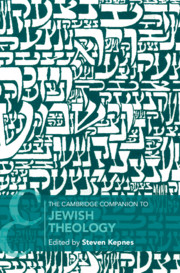Book contents
- The Cambridge Companion to JEWISH THEOLOGY
- cambridge companions to religion
- the cambridge companion to JEWISH THEOLOGY
- Copyright page
- Contents
- Notes on Contributors
- Acknowledgements
- 1 Introduction
- 2 What is Jewish Theology?
- Part I Biblical-Rabbinic
- 3 Jewish Biblical Theology
- 4 The God of the Rabbis
- 5 The Theology of the Daily Liturgy
- Part II Medieval
- Part III Modern
- Part IV Contemporary Issues
- Part V Analytic Philosophy and Theology
- Index
- Other Titles in the Series (continued from page ii)
- References
5 - The Theology of the Daily Liturgy
from Part I - Biblical-Rabbinic
Published online by Cambridge University Press: 03 December 2020
- The Cambridge Companion to JEWISH THEOLOGY
- cambridge companions to religion
- the cambridge companion to JEWISH THEOLOGY
- Copyright page
- Contents
- Notes on Contributors
- Acknowledgements
- 1 Introduction
- 2 What is Jewish Theology?
- Part I Biblical-Rabbinic
- 3 Jewish Biblical Theology
- 4 The God of the Rabbis
- 5 The Theology of the Daily Liturgy
- Part II Medieval
- Part III Modern
- Part IV Contemporary Issues
- Part V Analytic Philosophy and Theology
- Index
- Other Titles in the Series (continued from page ii)
- References
Summary
This essay deals first with individual prayers of the daily liturgy that excel in distinctive theological affirmations followed by that of the Shema Liturgy as a whole. In discerning the theological patterns of the liturgy and the relationship between the whole and the parts, it focuses on the centrality of Divine kingship and the move from individual to community to humanity especially as expressed in hopes for redemption. It concludes with the peculiarities of a post-temple liturgy.
Keywords
- Type
- Chapter
- Information
- The Cambridge Companion to Jewish Theology , pp. 77 - 102Publisher: Cambridge University PressPrint publication year: 2020



